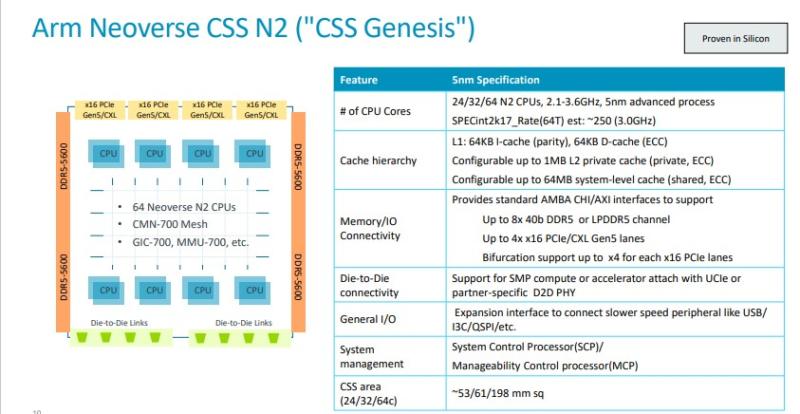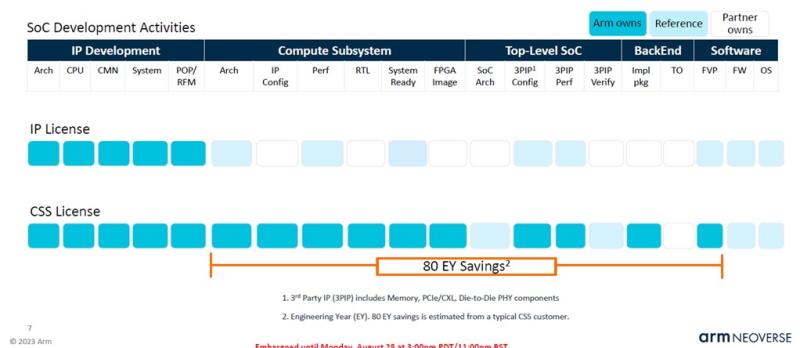Arm took the stage at Hot Chips on Monday to introduce Arm Neoverse Compute Subsystems to allow Arm customers to build specialized chips on the 5nm process at lower cost and faster than traditional discrete IP.
The announcement is intended to help Arm expand its customer base beyond the largest chipmakers to companies that don’t have the expertise to turn basic chip architectures into finished products. The move comes as Arm’s owner, Softbank, recently initiated the process to bring Arm public.
The first-generation CSS product is called Arm CSS N2, which is pre-integrated and delivered in a customizable compute subsystem and optimized for power, performance and smaller size. Chipmakers will be able to differentiate themselves from the competition on memory, IO, acceleration, physical topology and more, Arm said.
“With CSS N2, Arm is freeing up partner engineering resources to focus on SoC and system-level innovation,” said Arm’s Mohamed Awad, general manager of infrastrure. One partner has already used the CSS approach to save 80 engineering years, going from project idea to booting Linux on 100 cores in just 13 months, he said.
CSS N2 is also designed to enable specific accelerator integration in SoCs, including with AI. Awad said it will help companies achieve market-leading performance per watt for cloud native workloads. It is available today, he said.
“There’s an increasing need for more efficient computing across all workloads,” said Anitha Kona, lead system architect at Arm, in an interview with reporters and analysts. “The only way to get there is through specialized silicon.”
Awad estimated there are now 1 billion 5G subscribers, nearly 15 billion IoT connections and 120 zetabytes of data being generated, all requiring more power and performance in silicon.
Jeff Defilippi, director of product management at Arm, explained that CSS is “essentially an interconnect” for Neoverse compute subsystems. He also termed it a “partner innovation zone for customization” running with 192 cores today and moving to 256 cores at some point in the future. “It lowers development cost from inception to taping out to building silicon.”
Kona said CSS N2 will run 24/32/64 N2 CPUs at 2.1 to 3.6 GHz and can interface with up to 8x 40b DDR5. An expansion interface will connect to slow speed peripherals like USB.
Jack Gold, an analyst at J. Gold Associates, said the CSS N2 will lower the barrier for many companies that need to do custom design but don’t have the skills to build a computer chip from basic IP as companies like Qualcomm and NXP can. Such customers might include- a carmaker or an appliance maker that needs a custom chip but wants most of the work done in advance.
CCS is “really a next step in Arm’s evolution,” he said. “It will allow them to expand their market to more customers.”
Also, Arm can change more in royalties for the complete design that if a company just licenses a component IP. “Arm is trying to move up the value stack to increase revenues as it goes public and plays with new royalty models and is one way to increase the base on which loyalties can be calculated,” Gold added. “It’s not a bad strategy but might eventually put them in competition with the bigger chip companies that license the Arm IP and sell to the broad marketplace.”

